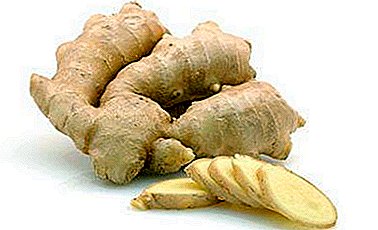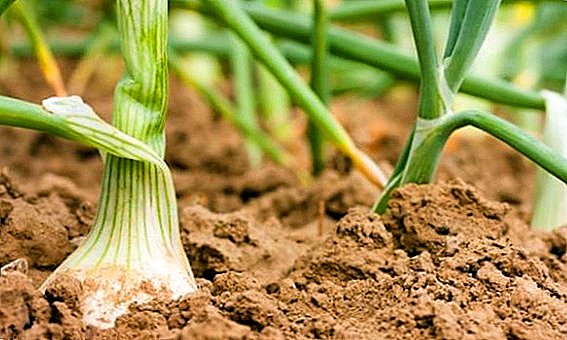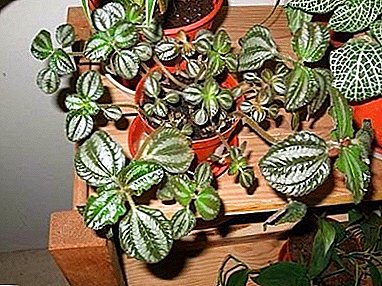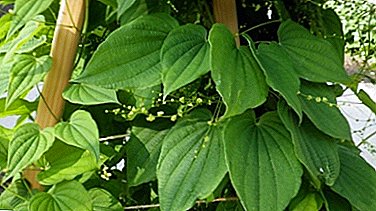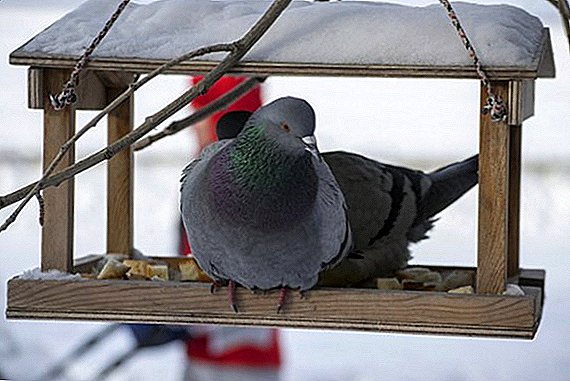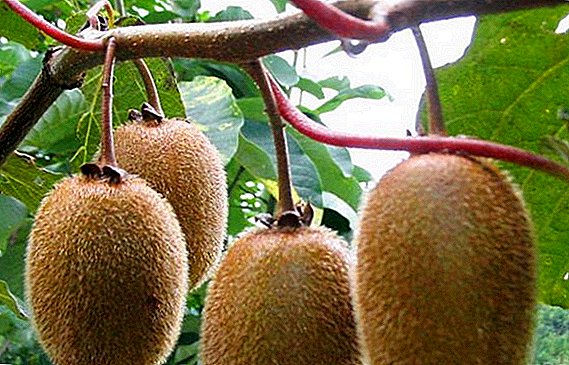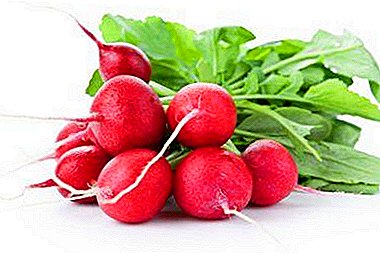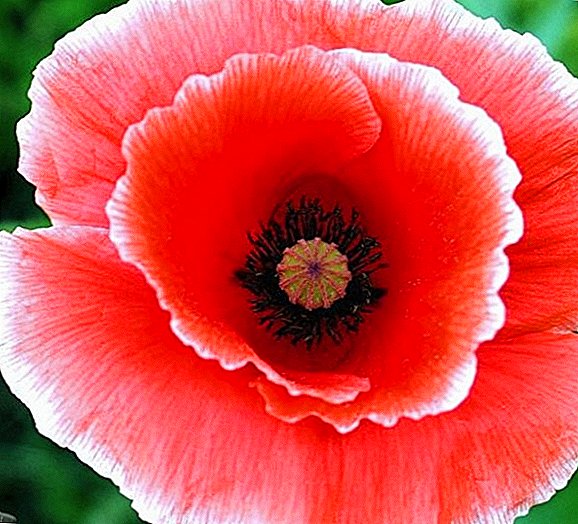 Attitudes of people towards Maca have always been ambiguous, because at the time, while some consider it just a beautiful plant and a good addition to cakes, others talk about opium properties and undesirable use in almost any form. Is it really harmful opium poppy and can we benefit from it, we will try to find out.
Attitudes of people towards Maca have always been ambiguous, because at the time, while some consider it just a beautiful plant and a good addition to cakes, others talk about opium properties and undesirable use in almost any form. Is it really harmful opium poppy and can we benefit from it, we will try to find out.
Opium (hypnotic) poppy: botanical description
Today a grassy annual plant, reaching a height of 1-1.2 meters, is called a sleeping poppy.. Almost all of its parts are either completely naked or covered with single hairs, mainly on peduncles and on the veins of leaf plates. 
Root system
The opium poppy root system is represented by a taproot, which penetrates the soil 1 m or even deeper. Slightly elongated basal leaves are placed in a spiral and grow up to 20-30 cm in length.
Did you know? It is believed that poppy grows always in abundance on the battlefield. The main reason for this was, of course, the red-bloody color of flowers.
Stems and leaves
The bluish-green stem of the hypnotic poppy is upright, absolutely smooth and slightly branched at the top. Leaves, on the basis of their external features, can be divided into two groups: the lower ones are placed on small petioles and gradually pass into the plate itself, and the upper ones are fully sessile, with a bluish and oblong, slightly corrugated plate (its length is 10-30 cm).
They have a jagged edge or a notched-lobed ending. 
Flowers and fruits
Actinomorphic, large flowers of the plant are located on thick and long peduncles, which can be either bare, or with slightly bulged bristles.
All of them are single and are located at the very top of the stem branches. Until the very disclosure, bare and leathery oval buds are in a drooping state. The length of the future flowers is 1.5-3 cm. Before opening, they all straighten, and the two leathery sepals inside the cup fall off.
The ten centimeter corolla is formed by four round or broadly ovate petals of red, pink, white or purple color with the same purple or yellow spot at the base.
Many stamens are freely placed in several circles. Their threads can be both dark and light, with a thickening above the middle.
Anthers - slightly elongated, gynetsy - coenycarpic, created from a variety of accreted carpels. Ovary is usually upper, with multiple ovules.  Opium poppy flowering can be observed from May until August, and at the end of this process fruits appear on plants, represented by short cylindrical or almost spherical boxes about 2-7 cm long. Such a box is slightly narrowed and turns into a well-marked, rather long leg.
Opium poppy flowering can be observed from May until August, and at the end of this process fruits appear on plants, represented by short cylindrical or almost spherical boxes about 2-7 cm long. Such a box is slightly narrowed and turns into a well-marked, rather long leg.
Inside the fruit is single-numbered, with partial partitions and many small seeds. The lamina disc is flat, with pronounced teeth and 8–12 rays.
All seeds contained within are dense enough, with oily endosperm. They reach 1–1.5 mm in diameter and are considered fully ripe around late July or early September.
Read also about the features of the cultivation of oriental and California poppies.
Spread of culture
Until now, there is no consensus about the homeland of opium poppy. Some sources talk about the lack of data on its growth in the wild and the possibility of growing only in culture, while others (for example, the information project GRIN) call the Canary Islands, Crete, Cyprus, Italy, Greece, northern Algeria, Libya and Tunisia.
As for cultural breeding, Asia Minor, Greece, India, Iran, China and Turkey, where the plant has been cultivated since ancient times, are considered to be pioneers in this direction.
In the former USSR, opium poppy was grown for medicinal purposes in the 70s of the last century, and its cultivation began in Kyrgyzstan. At that time, the main plantations of the plant were concentrated in Kazakhstan and Kyrgyzstan, while in the territory of modern Ukraine and in the Voronezh province it was actively grown in pre-revolutionary times.  You could also find a sleeping poppy in the Samara region, Bashkiria and in the southern part of Western Siberia. Today, this plant is prohibited from growing almost everywhere, and the only exception is South-West China, Thailand and Burma.
You could also find a sleeping poppy in the Samara region, Bashkiria and in the southern part of Western Siberia. Today, this plant is prohibited from growing almost everywhere, and the only exception is South-West China, Thailand and Burma.
Chemical composition and use of opium poppy
All the properties of opium poppy are determined by chemical composition, so its use for medical purposes began with the study of these characteristics.
Read also how are used for medical purposes such plants as: red clover, pelargonium, mullein, medicinal shiksha, Siberian salsola, gravy, marijuana, hemlock, calgan root, train, ephedra horsetail and peony evading.
Studying the composition
During the whole period of development, the chemical composition of the described poppy may vary. Thus, at the initial stage, about 20% of the dry milky juice, known as opium, is present in the aboveground part of the plant. It is in its composition that 10-25% of the total amount of isoquinoline alkaloids is contained, half of which are morphine narcotic substances.
The rest are papaverine, codeine, thebaine and some other ingredients used today for medical purposes. At the same time, only 0.3-0.5% morphine can be found in fully ripened boxes of Shrovetide poppy, which is much less than in the initial stages of fruit formation.
Use and application in medicine
Morphine, codeine and thebaine isolated from opium are widely used in the official medicine of modern times, since they have the following properties:
- morphine it can even cope with severe painful manifestations and is considered a narcotic analgesic (its use is appropriate in case of receiving serious injuries, oncological diseases and heart problems);
- codeine reduces irritability of the nerve center and is successfully used to create antitussive drugs;
- thebaine, like morphine, is an analgesic of narcotic origin, thereby helping to cope with serious pain attacks.
 Among the most popular products with morphine, one-percent injection solution Morphine Hydrochloride, Morfilong injection solutions (0.5%) and Omnopon (1% or 2%) can be distinguished. All of them are used as strong painkillers. Codeine is an integral part of the drugs "Codelac", "Codeterpin" and Bechterew's medicines.
Among the most popular products with morphine, one-percent injection solution Morphine Hydrochloride, Morfilong injection solutions (0.5%) and Omnopon (1% or 2%) can be distinguished. All of them are used as strong painkillers. Codeine is an integral part of the drugs "Codelac", "Codeterpin" and Bechterew's medicines.Important! Regular use of drugs with poppy alkaloids can cause addiction and, as a consequence, the development of drug addiction.
Differences of opium from decorative poppy
Unfortunately, many people in collecting poppy seeds do not wonder about the origin and varieties of the plant, taking any seed as food raw materials.
Of course, such products will always be characterized by a large amount of poppy oil, but in order to protect themselves from the use of opiates, it is advisable to know about the external differences in food and sleeping pills.
The ornamental crops that are often found on the territory of our country mainly include the long-term oriental poppy and the Shirley poppy, also called self-seed. Both varieties are characterized by very bright flower petals, the palette of which starts from orange tones and ends in rich red hues.  For comparison, the petals of opium plants are pale, blue-violet. In some decorative varieties, the leaf plates are almost the same as in the sleeping pill, but the flowers will be very bright and noticeable anyway.
For comparison, the petals of opium plants are pale, blue-violet. In some decorative varieties, the leaf plates are almost the same as in the sleeping pill, but the flowers will be very bright and noticeable anyway.
Is it possible to grow poppy as an ornamental crop?
The described plant is prohibited for cultivation in many countries, and in Ukraine, Belarus and Russia for its cultivation in the dacha plots provides for a rather serious responsibility. Let's look at the nuances of this issue more closely.
In Ukraine
Taking into account the narcotic properties of poppy, its cultivation for the purpose of marketing (no matter whether you are going to bake pies or really have malicious intent) provides for the issuance of an appropriate license. This is stated in Article 7 of the Law "On Drugs" and Article 9 of the Law "On Licensing".
Since the farm is considered a form of entrepreneurial activity and in most cases is registered as a legal entity, the farmer has every chance of obtaining the required license. With a complete list of documents required for this, every citizen can familiarize themselves on the official resource of the Ministry of Internal Affairs.  Among the varieties of poppy that are permissible for cultivation are the Berkut, Victoria, Volynsky, Gray, Terlach, Zhar, Krivotulsky, Kristall, Coral and some other varieties.
Among the varieties of poppy that are permissible for cultivation are the Berkut, Victoria, Volynsky, Gray, Terlach, Zhar, Krivotulsky, Kristall, Coral and some other varieties.
Important! A cultivation license can only be issued to a farmer who has an agricultural education or who has hired a director with an appropriate level of education. You will also have to provide jobs for a certified mechanical engineer and agronomist.
An important point is the fact that all employed workers must be adults, capable and not have a criminal record, and the farmer must provide all conditions for the safety of products with the prevention of possible theft.
As for the purchase of seeds for growing these plants, they must be conditioned and reproductive, supplied by the subjects of seed production, which are noted in the State Register of Producers.
In Russia
Opium poppy is included in the list of narcotic substances in the Russian Federation, but, in addition to it, farmers can also be punished for cultivating plants with a box diameter of 2-5 cm or more.
Most of them are annuals, although sometimes perennials are also found (for example, an oriental poppy, which has been beloved by many gardeners). In the Government Decree number 934 in the list of prohibited today listed such varieties:
- hypnotic;
- setiform;
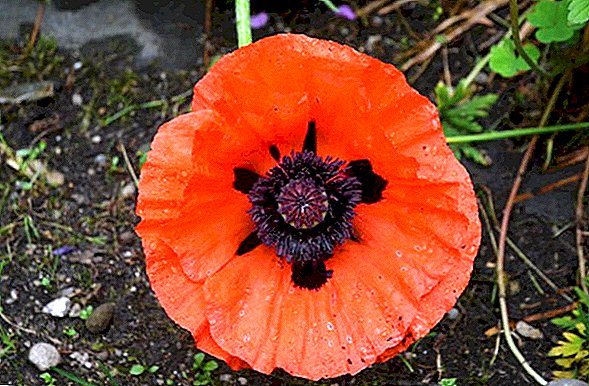
- bract;

- Oriental.
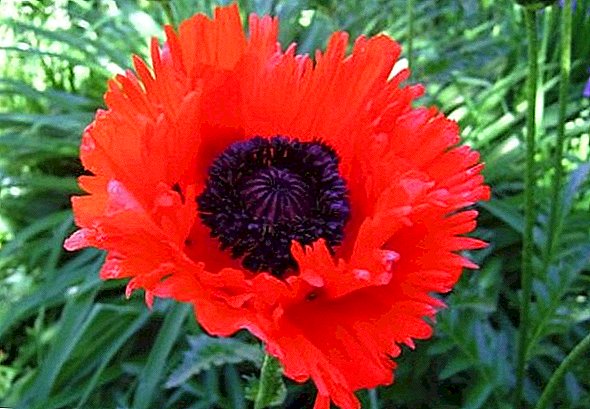
For the past few years, the Ministry of Industry and Trade has been talking about the need to legalize the cultivation of opium poppy on a farm scale, arguing its point of view by its value for medical purposes. However, at the moment the relevant amendments to Article 18 of the Law "On Narcotic Drugs" have not been made, which means that all the same administrative or criminal liability is provided for the plantations of the above plants.
In Belarus
Belarusian citizens are punished for growing banned plants with fines or even imprisonment, if we are talking about the mass cultivation or processing of plants for narcotic drugs for the purpose of marketing. This is stated in the 16th article of the Administrative Code of the Republic of Belarus.
However, there is an exception from each rule, and in the case of opium poppy it is the conduct of scientific activity. Of course, the organization or individual must have all the relevant documents confirming his status.
Did you know? The name "morphine" is associated with the name of the god of dreams Morpheus, and, apparently, because of the hypnotic properties of these white crystals, isolated in 1806, received such a definition.
Ornamental species are not prohibited for cultivation, but at the same time every gardener is obliged to ensure that the growing plants are definitely not prohibited.
To protect themselves from possible troubles, many citizens prefer not to grow poppies at all, which has a certain logic: some species are really very similar to decorative ones, but they contain opiates.  In short, if you have not thoroughly studied all the requirements of local legislation regarding the possibility of growing forbidden plants in your region, then it is better not to risk it.
In short, if you have not thoroughly studied all the requirements of local legislation regarding the possibility of growing forbidden plants in your region, then it is better not to risk it.
Plant other beautiful flowers on your plot, especially as you can buy ready-made poppy for food at almost any grocery store.
You can decorate your plot with the help of: marigold, nasturtium, ipomoea, dahlia, delphinium, asters, kosmey, zinnia or petunias.





